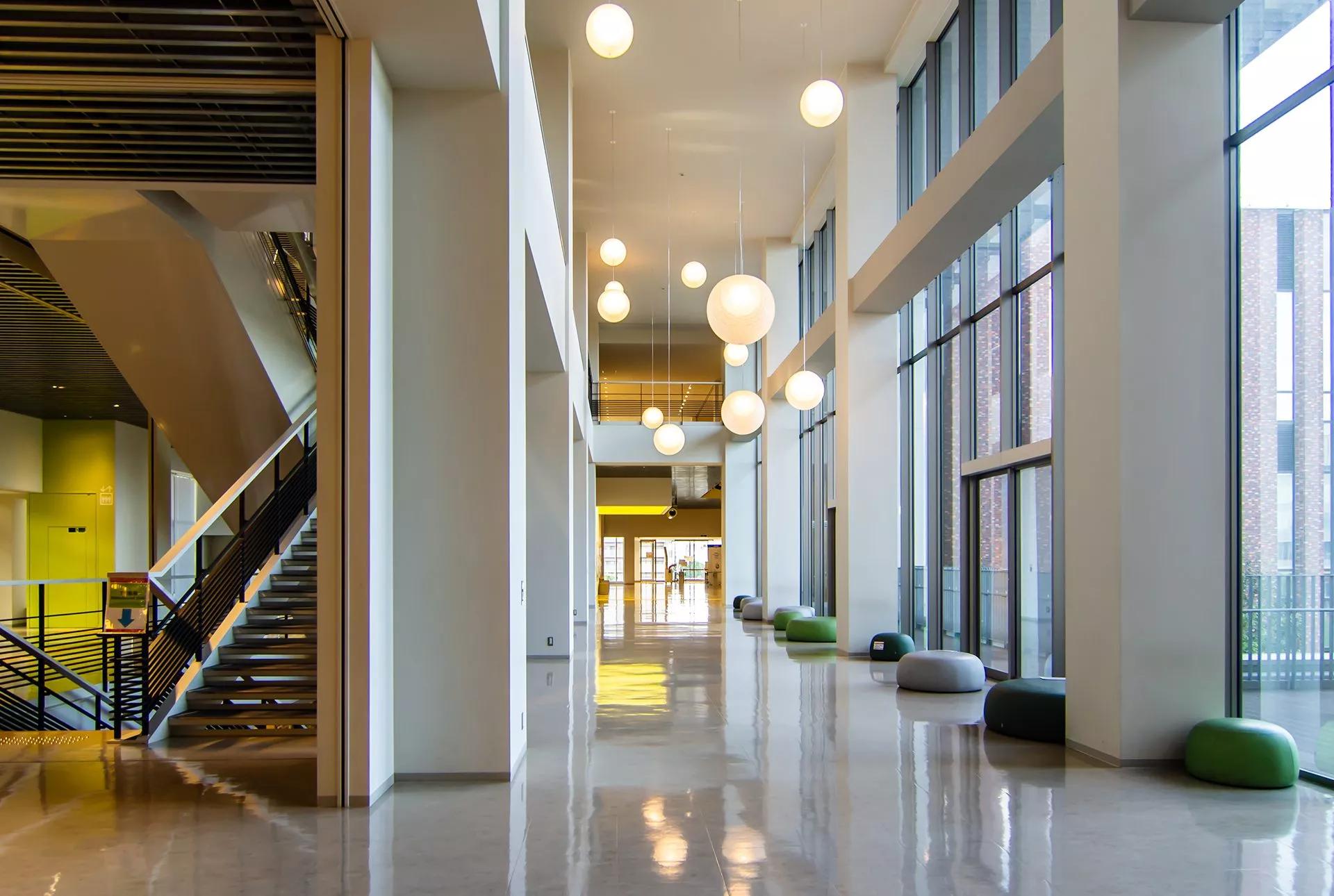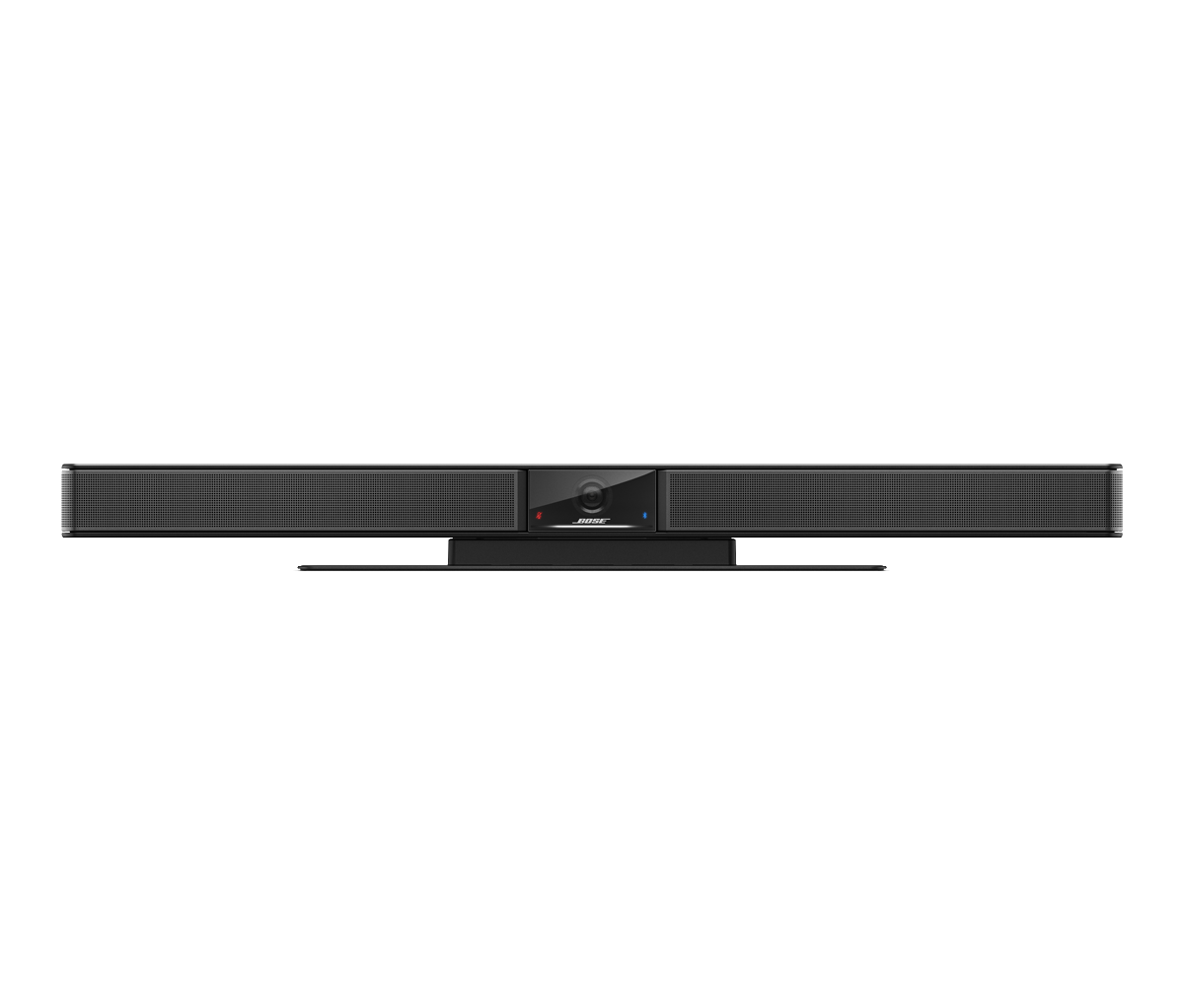ABOUT THE PROJECT

Ritsumeikan University is one of Japan’s leading global universities, with 16 faculty teams, 21 graduate schools and 35,000 students across four campuses in Kyoto and other locations. The campus itself is designed to encourage personal encounters and exchanges so students from Japan and around the world can experience the diversity of values and cultures. The Osaka Ibaraki Campus is the newest location and was designed without the usual perimeter walls, allowing the surrounding community access to the campus. The park, café and convenience store are for students as well as local residents to relax and enjoy, allowing for natural social interactions. The university building was designed with a variety of spaces, including a common area with a Japanese tatami raised-mat floor for group conversations and discussions and classrooms that can be opened without a boundary wall to the hallway.
The university needed to quickly identify technology that would allow their instructors to continue teaching students while the country dealt with lockdowns and limited movement. Kengo Kurashina, who works in the Information Infrastructure Section of the Information Systems Department at Ritsumeikan University, shared the decision process in selecting the equipment needed to support teaching in a new hybrid environment.

“In April 2020, a state of emergency was declared due to the global pandemic, and as a result, online classes were mainly one-way during the spring semester,” stated Kurashina, describing how lessons were made available for students to watch. “However, there were many requests from students and teachers for two-way communication.”
Realizing the need for technology to support a more collaborative experience, the university explored the options available and selected equipment that provided combined audio and video capabilities for the small classrooms. With the decision made, Kurashina explained, “We moved quickly to install the remote distribution equipment in all 620 classrooms.”
By the fall 2020 semester, the university began conducting hybrid classes with both face-to-face and remote students attending at the same time. For classes held in medium sized classrooms, the university realized they needed technology that combined microphone performance to capture audio throughout the space; a camera that could capture the entire classroom from a wider angle; and high-performance loudspeakers that could deliver clear audio to the entire classroom.
THE BOSE PROFESSIONAL SOLUTION

The Videobar VB1 met the exacting needs outlined by the university. Kurashina described the appeal of the Bose Professional solution, “When we installed the VB1 in a medium-sized classroom, the audio was transmitted clearly to the students who were participating remotely. And the VB1’s high-quality microphone performance was handy in situations where students were socially distanced throughout the classroom.”
Setting the Videobar VB1’s exclusion zones effectively reduced the ambient room noise from the ventilation fan, which was naturally louder due to its increased use in support of the university’s commitment to student health and safety. The Videobar VB1, used in classrooms with 20 to 30 students, was ideal for hybrid classes, supporting the university’s commitment to teach students on and off campus. The single-cable, USB conferencing device with its all-in-one camera, beam-steering microphones and loudspeaker is mounted on a tripod stand so that it can be moved freely to any position and height as needed for each class. For teachers who move around the classroom, the auto framing function is a valuable feature enabling everyone to see and understand the instructor or whiteboard.

Kurashina also noted an additional benefit of having the camera and microphones together in this all-in-one device, “With cameras and microphones in each classroom, we can easily record discussions and archive them as memoranda or minutes. In that sense, it’s much more cost-effective than buying fixed cameras and recording equipment.”
For Kurashina, who sets up and manages the system, the flexibility of the configuration software was also very appealing. “The simplicity of the software and its ability to be intuitively customized to suit each environment — including the ability to see where the microphones are focused and the ease of setting exclusion zones — is a major attraction of the VB1.”

While the global situation forced many to rethink how people interact each day, it provided the Ritsumeikan University the opportunity to overcome the major barrier of distance and employ a new approach to teaching. “We had to immediately act on projects that we had planned to address over the next ten years. This also allowed us to explore a lot of possibilities,” Kurashina explained. “We’ll continue to use the remote equipment as standard equipment even when our students return to on-site learning. The Videobar VB1 provides smooth and active remote communication, enabling a high level of hybrid teaching styles where students can participate in face-to-face classes from remote locations.”
The Videobar VB1 brought clear improvements to Ritsumeikan University, allowing for the quick adoption of remote communication and teaching in the classroom. The flexibility it provides will enable a wider range of diverse communication — supporting the Ritsumeikan University’s continued evolution into a more active and synergistic place of learning.
“I really liked the sound masking the exclusion zone feature provided… I can hear what students are saying with the clarity that Bose Professional is known for.”
— Kengo Kurashina
Ritsumeikan University

